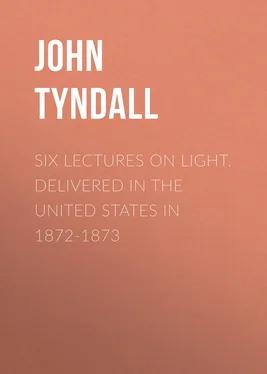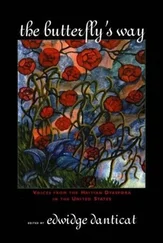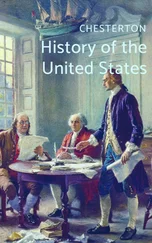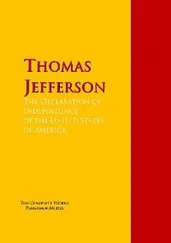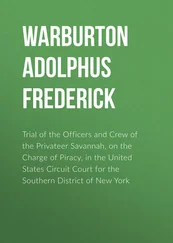John Tyndall - Six Lectures on Light. Delivered In The United States In 1872-1873
Здесь есть возможность читать онлайн «John Tyndall - Six Lectures on Light. Delivered In The United States In 1872-1873» — ознакомительный отрывок электронной книги совершенно бесплатно, а после прочтения отрывка купить полную версию. В некоторых случаях можно слушать аудио, скачать через торрент в формате fb2 и присутствует краткое содержание. Жанр: foreign_antique, Физика, foreign_edu, на английском языке. Описание произведения, (предисловие) а так же отзывы посетителей доступны на портале библиотеки ЛибКат.
- Название:Six Lectures on Light. Delivered In The United States In 1872-1873
- Автор:
- Жанр:
- Год:неизвестен
- ISBN:нет данных
- Рейтинг книги:5 / 5. Голосов: 1
-
Избранное:Добавить в избранное
- Отзывы:
-
Ваша оценка:
- 100
- 1
- 2
- 3
- 4
- 5
Six Lectures on Light. Delivered In The United States In 1872-1873: краткое содержание, описание и аннотация
Предлагаем к чтению аннотацию, описание, краткое содержание или предисловие (зависит от того, что написал сам автор книги «Six Lectures on Light. Delivered In The United States In 1872-1873»). Если вы не нашли необходимую информацию о книге — напишите в комментариях, мы постараемся отыскать её.
Six Lectures on Light. Delivered In The United States In 1872-1873 — читать онлайн ознакомительный отрывок
Ниже представлен текст книги, разбитый по страницам. Система сохранения места последней прочитанной страницы, позволяет с удобством читать онлайн бесплатно книгу «Six Lectures on Light. Delivered In The United States In 1872-1873», без необходимости каждый раз заново искать на чём Вы остановились. Поставьте закладку, и сможете в любой момент перейти на страницу, на которой закончили чтение.
Интервал:
Закладка:
Fig. 3.
The law that the angle of incidence is equal to the angle of reflection has a bearing upon theory, to be subsequently mentioned, which renders its simple illustration here desirable. A straight lath (pointing to the figure 5 on the arc in fig. 3) is fixed as an index perpendicular to a small looking-glass (M), capable of rotation. We begin by receiving a beam of light upon the glass which is reflected back along the line of its incidence. The index being then turned, the mirror turns with it, and at each side of the index the incident and the reflected beams (L o , o R) track themselves through the dust of the room. The mere inspection of the two angles enclosed between the index and the two beams suffices to show their equality; while if the graduated arc be consulted, the arc from 5 to m is found accurately equal to the arc from 5 to n . The complete expression of the law of reflection is, not only that the angles of incidence and reflection are equal, but that the incident and reflected rays always lie in a plane perpendicular to the reflecting surface.
This simple apparatus enables us to illustrate another law of great practical importance, namely, that when a mirror rotates, the angular velocity of a beam reflected from it is twice that of the reflecting mirror. A simple experiment will make this plain. The arc ( m n , fig. 3) before you is divided into ten equal parts, and when the incident beam and the index cross the zero of the graduation, both the incident and reflected beams are horizontal. Moving the index of the mirror to 1, the reflected beam cuts the arc at 2; moving the index to 2, the arc is cut at 4; moving the index to 3, the arc is cut at 6; moving the index at 4, the arc is cut at 8; finally, moving the index to 5, the arc is cut at 10 (as in the figure). In every case the reflected beam moves through twice the angle passed over by the mirror.
One of the principal problems of science is to help the senses of man, by carrying them into regions which could never be attained without that help. Thus we arm the eye with the telescope when we want to sound the depths of space, and with the microscope when we want to explore motion and structure in their infinitesimal dimensions. Now, this law of angular reflection, coupled with the fact that a beam of light possesses no weight, gives us the means of magnifying small motions to an extraordinary degree. Thus, by attaching mirrors to his suspended magnets, and by watching the images of divided scales reflected from the mirrors, the celebrated Gauss was able to detect the slightest thrill of variation on the part of the earth's magnetic force. By a similar arrangement the feeble attractions and repulsions of the diamagnetic force have been made manifest. The minute elongation of a bar of metal, by the mere warmth of the hand, may be so magnified by this method, as to cause the index-beam to move through 20 or 30 feet. The lengthening of a bar of iron when it is magnetized may be also thus demonstrated. Helmholtz long ago employed this method of rendering evident to his students the classical experiments of Du Bois Raymond on animal electricity; while in Sir William Thomson's reflecting galvanometer the principle receives one of its latest and most important applications.
§ 4. The Refraction of Light. Total Reflection
For more than a thousand years no step was taken in optics beyond this law of reflection. The men of the Middle Ages, in fact, endeavoured, on the one hand, to develop the laws of the universe à priori out of their own consciousness, while many of them were so occupied with the concerns of a future world that they looked with a lofty scorn on all things pertaining to this one. Speaking of the natural philosophers of his time, Eusebius says, 'It is not through ignorance of the things admired by them, but through contempt of their useless labour, that we think little of these matters, turning our souls to the exercise of better things.' So also Lactantius—'To search for the causes of things; to inquire whether the sun be as large as he seems; whether the moon is convex or concave; whether the stars are fixed in the sky, or float freely in the air; of what size and of what material are the heavens; whether they be at rest or in motion; what is the magnitude of the earth; on what foundations is it suspended or balanced;—to dispute and conjecture upon such matters is just as if we chose to discuss what we think of a city in a remote country, of which we never heard but the name.'
As regards the refraction of light, the course of real inquiry was resumed in 1100 by an Arabian philosopher named Alhazen. Then it was taken up in succession by Roger Bacon, Vitellio, and Kepler. One of the most important occupations of science is the determination, by precise measurements, of the quantitative relations of phenomena; the value of such measurements depending greatly upon the skill and conscientiousness of the man who makes them. Vitellio appears to have been both skilful and conscientious, while Kepler's habit was to rummage through the observations of his predecessors, to look at them in all lights, and thus distil from them the principles which united them. He had done this with the astronomical measurements of Tycho Brahe, and had extracted from them the celebrated 'laws of Kepler.' He did it also with Vitellio's measurements of refraction. But in this case he was not successful. The principle, though a simple one, escaped him, and it was first discovered by Willebrord Snell, about the year 1621.
Less with the view of dwelling upon the phenomenon itself than of introducing it in a form which will render subsequently intelligible to you the play of theoretic thought in Newton's mind, the fact of refraction may be here demonstrated. I will not do this by drawing the course of the beam with chalk on a black board, but by causing it to mark its own white track before you. A shallow circular vessel (RIG, fig. 4), half filled with water, rendered slightly turbid by the admixture of a little milk, or the precipitation of a little mastic, is placed with its glass front vertical. By means of a small plane reflector (M), and through a slit (I) in the hoop surrounding the vessel, a beam of light is admitted in any required direction. It impinges upon the water (at O), enters it, and tracks itself through the liquid in a sharp bright band (O G). Meanwhile the beam passes unseen through the air above the water, for the air is not competent to scatter the light. A puff of smoke into this space at once reveals the track of the incident-beam. If the incidence be vertical, the beam is unrefracted. If oblique, its refraction at the common surface of air and water (at O) is rendered clearly visible. It is also seen that reflection (along O R) accompanies refraction, the beam dividing itself at the point of incidence into a refracted and a reflected portion. 4 4 It will be subsequently shown how this simple apparatus may be employed to determine the 'polarizing angle' of a liquid.
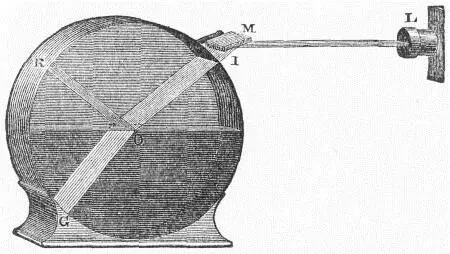
Fig. 4.
The law by which Snell connected together all the measurements executed up to his time, is this: Let A B C D (fig. 5) represent the outline of our circular vessel, A C being the water-line. When the beam is incident along B E, which is perpendicular to A C, there is no refraction. When it is incident along m E, there is refraction: it is bent at E and strikes the circle at n . When it is incident along m' E there is also refraction at E, the beam striking the point n' . From the ends of the two incident beams, let the perpendiculars m o , m' o' be drawn upon B D, and from the ends of the refracted beams let the perpendiculars p n , p' n' be also drawn. Measure the lengths of o m and of p n , and divide the one by the other. You obtain a certain quotient. In like manner divide m' o' by the corresponding perpendicular p' n' ; you obtain precisely the same quotient. Snell, in fact, found this quotient to be a constant quantity for each particular substance, though it varied in amount from one substance to another. He called the quotient the index of refraction .
Читать дальшеИнтервал:
Закладка:
Похожие книги на «Six Lectures on Light. Delivered In The United States In 1872-1873»
Представляем Вашему вниманию похожие книги на «Six Lectures on Light. Delivered In The United States In 1872-1873» списком для выбора. Мы отобрали схожую по названию и смыслу литературу в надежде предоставить читателям больше вариантов отыскать новые, интересные, ещё непрочитанные произведения.
Обсуждение, отзывы о книге «Six Lectures on Light. Delivered In The United States In 1872-1873» и просто собственные мнения читателей. Оставьте ваши комментарии, напишите, что Вы думаете о произведении, его смысле или главных героях. Укажите что конкретно понравилось, а что нет, и почему Вы так считаете.
